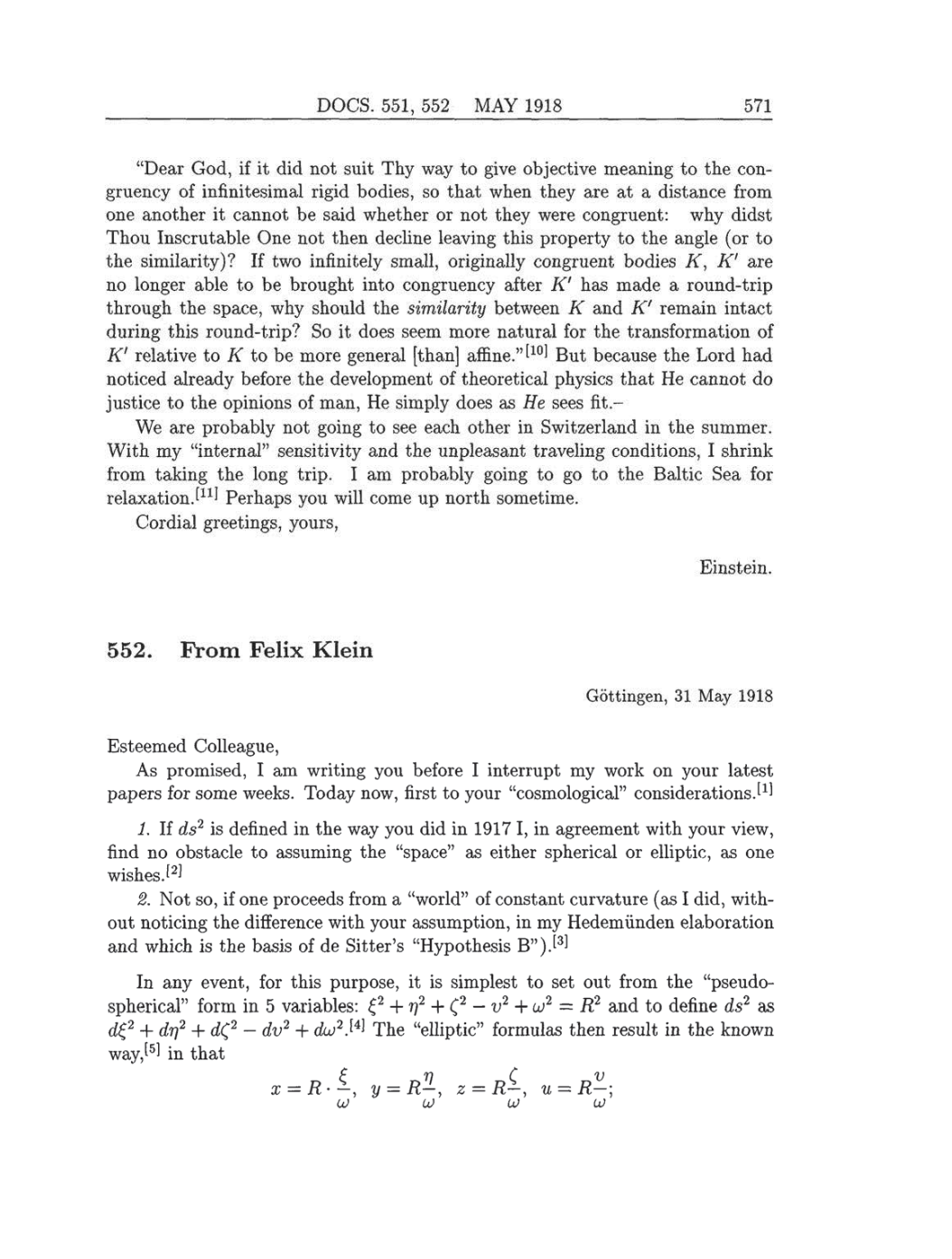DOCS.
551,
552 MAY 1918 571
“Dear
God,
if
it
did
not
suit
Thy way
to
give
objective meaning
to
the
con-
gruency
of infinitesimal
rigid bodies,
so
that
when they
are
at
a
distance from
one
another
it cannot be said whether
or
not
they
were
congruent: why
didst
Thou Inscrutable
One not
then
decline
leaving
this
property to
the
angle
(or
to
the
similarity)?
If
two
infinitely small,
originally congruent
bodies
K,
K'
are
no
longer
able to be
brought
into
congruency
after
K'
has made
a
round-trip
through
the
space, why
should
the
similarity
between
K
and
K'
remain
intact
during
this
round-trip? So
it
does
seem more
natural
for
the transformation
of
K'
relative to
K
to be
more
general
[than]
affine.”[10]
But
because
the
Lord
had
noticed
already
before
the
development
of theoretical
physics
that
He cannot
do
justice to
the
opinions
of
man,
He
simply
does
as
He
sees
fit.-
We
are
probably
not
going
to
see
each other in Switzerland in
the
summer.
With
my
“internal”
sensitivity
and
the
unpleasant traveling
conditions,
I
shrink
from
taking
the
long
trip. I
am
probably going
to
go
to
the
Baltic Sea for
relaxation.[11] Perhaps
you
will
come
up
north
sometime.
Cordial
greetings, yours,
Einstein.
552. From Felix Klein
Göttingen, 31
May
1918
Esteemed
Colleague,
As
promised,
I
am
writing
you
before
I interrupt
my
work
on
your
latest
papers
for
some
weeks.
Today
now,
first to
your
“cosmological”
considerations.[1]
1.
If
ds2 is
defined in the
way
you did in
1917 I,
in agreement with your view,
find no obstacle
to
assuming the
“space” as
either spherical
or
elliptic,
as
one
wishes.[2]
2.
Not
so, if one
proceeds from
a “world” of
constant curvature (as
I
did,
with-
out noticing
the
difference with your assumption,
in my
Hedemünden
elaboration
and which
is
the basis
of de
Sitter’s “Hypothesis
B”).[3]
In
any event,
for
this
purpose,
it
is
simplest
to set out from
the
“pseudo-
spherical”
form in
5
variables:
E2
+
n2
+
C2
-
v2
+
u2
=
R2
and to define
ds2
as
dE2
+
dn2
+
dC2
-
dv2
+
dw2.[4]
The
“elliptic”
formulas
then result in
the
known
way,[5]
in that
£ n
C
x
=
R--,
y
-
R-,
z
=
R-,
u
=
R-;v
U
U)
LO
LÜ
